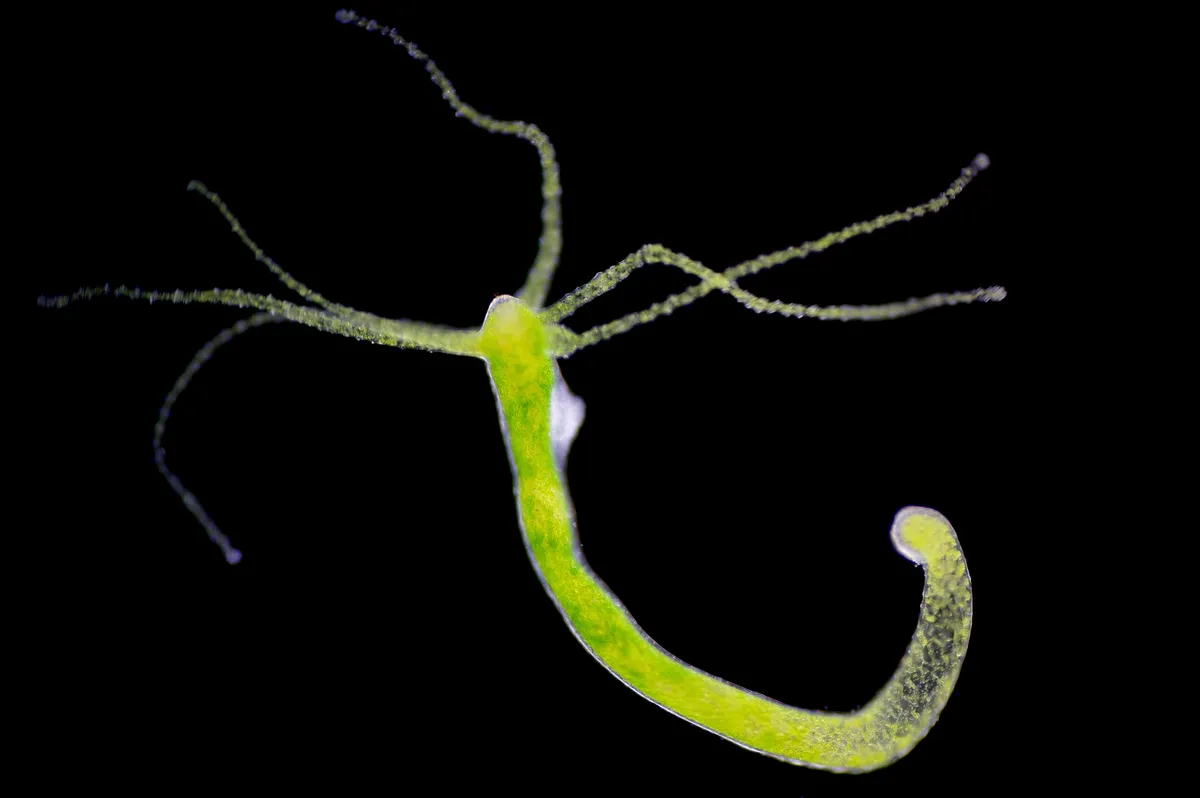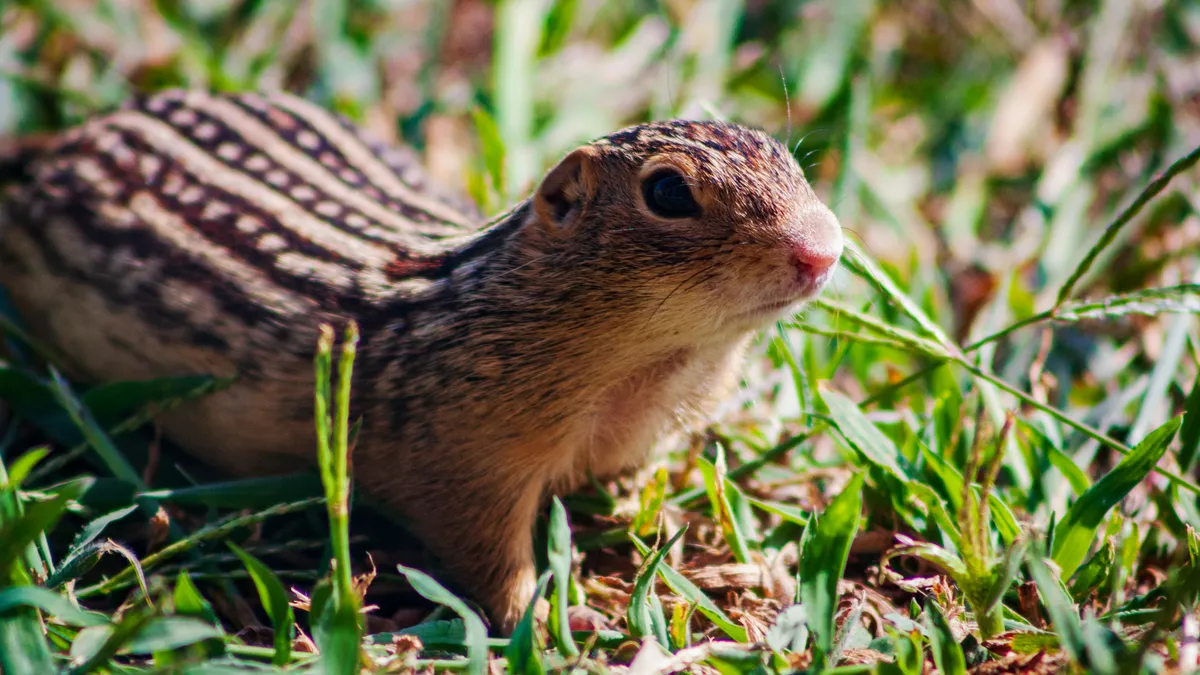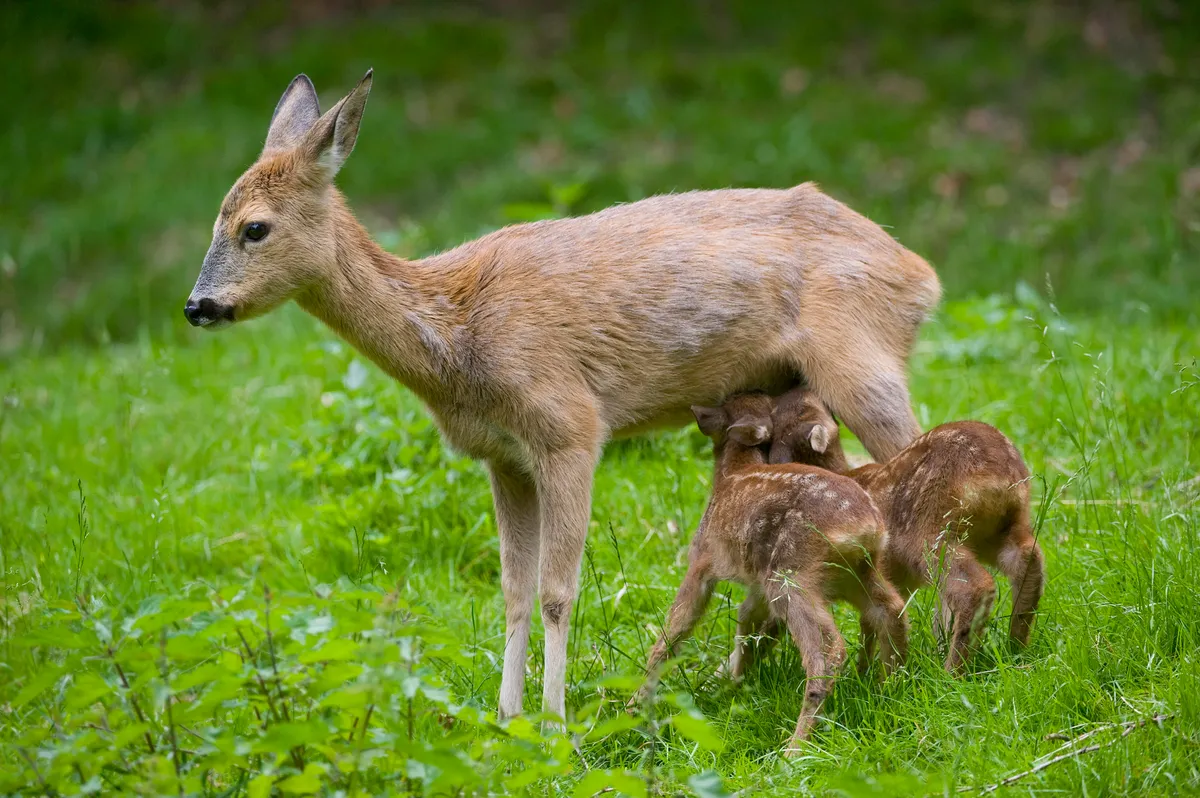Any defined habitat, from the soil beneath a plant to the surface of human skin, will contain a community of microorganisms living together: the microbiome.
When those microbes occur in and around an animal’s body, they form an ecosystem that can have a huge influence on their host’s physiology, health and even behaviour.
Do all animals have microbiomes?
Probably. Although microbiomes haven’t yet been surveyed across the whole animal kingdom, even simple Hydra (distant relatives of jellyfish) have microbial communities living on their surface.

More complex creatures will also carry microbes inside their digestive tract. To potentially help humans, the most well-studied are bacteria that live in the gut of mammals.
Are gut bacteria harmful?
Some can cause disease because they’re opportunistic pathogens, parasites that take advantage of weakened hosts, but most gut microbes are harmless or helpful.
Those ‘germs’ include the ‘friendly bacteria’ in yogurt adverts, which can be commensal (neither good nor bad) or mutualist species that exist in a symbiotic relationship that’s mutually beneficial to microbe and host.
Biological terms glossary: definitions, with examples
Clear as mud? Check out our glossary of scientific definitions of biological terms.
How can germs be helpful?
Friendly bacteria protect animals indirectly, by outcompeting harmful microbes for resources, or by producing molecules via metabolism – metabolites – that stimulate the host’s immune defences or serve as anti-microbial factors that attack disease-causing species directly to provide pathogen resistance.
On the flipside, an animal’s gut may release substances such as glycan sugars that promote the growth of desirable members within their microbial community.
Microbiomes can improve a host’s health in other ways: gut bacteria in the thirteen-lined ground squirrel (Ictidomys tridecemlineatus) are able to recycle essential nitrogen from urea, enabling the animals to keep making proteins while fasting during hibernation.

Do animals prefer specific microbes?
It depends on the host. While some animals (such as humans) harbour thousands of different gut bacteria, others only tolerate one.
For example, the Hawaiian bobtail squid has a symbiotic partnership with a single species, Vibrio fischeri – a bioluminescent bacterium that lives inside the squid’s special light organs.
Such a stable relationship over evolutionary time is known as phylosymbiosis. It’s more common on some branches of the animal tree of life, including insects and mammals, though bats have relatively few bacteria and their gut microbiome closely resembles that of birds, which suggests that lower microbial diversity is an adaptation that has been favoured by natural selection in two very distinct groups of flying vertebrates.
Where do microbiomes come from?
Microbes in an animal’s surroundings will colonise the body soon after birth, but a host may also capture its first microbiome. The newborns of true mammals acquire microbes via breast milk. But some animals, such as mice, also gain gut bacteria from their parents through coprophagy – eating faeces.

The mix of species in a gut microbiome varies among individual hosts and changes over a lifetime, depending on the microbes present in an animal’s diet or environment, and so a microbiome’s composition will be made up of both permanent members of the community plus transient species.
Can microbes impact conservation?
Yes. Microbiomes affect not just animal health, but also behaviour. That might be because blood can transport metabolites released by gut microbes to the brain (a path called the gut-brain axis), which alters neural activity.
For example, glyphosate, an agricultural weedkiller, suppresses the gut microbiome and interferes with honeybee navigation. Bee populations are in decline and the herbicide seems to alter the animal’s social behaviour via microbes.
Are microbiomes vital?
Again, it depends. Cows wouldn’t survive without the bacteria that perform the metabolic reaction (fermentation) that enables the animals to digest grass. Such examples of microbes and hosts that are inextricably linked has led biologists to consider them as one ecological unit: a meta-organism or holobiont.
The Hawaiian bobtail squid partners with a bioluminescent microbiome. © Steven Trainoff Ph.D./Getty
